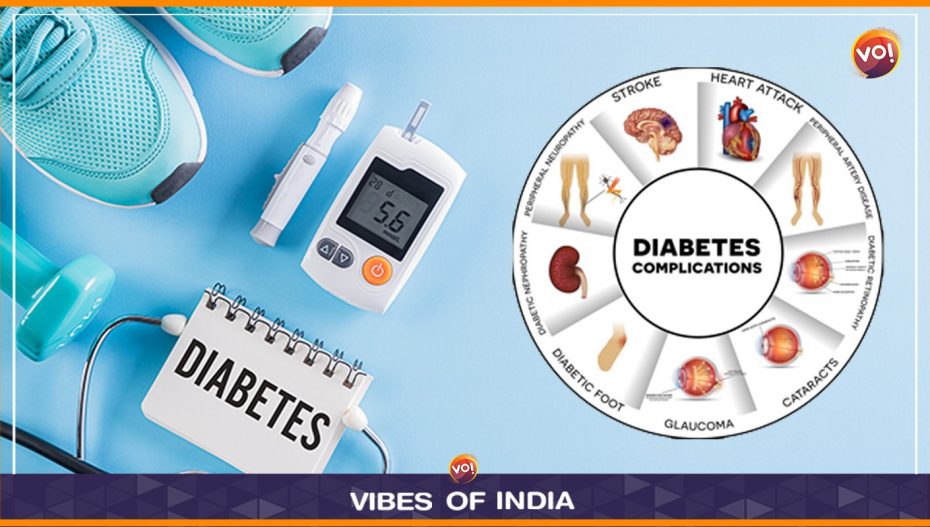An estimated 77 million people above 18 years are suffering from Type 2 diabetes in India. Almost 25 million aren’t even aware that they’re in a prediabetic state. Over 50% of people are ignorant of their diabetic status. Adults with diabetes have a two-to-three-fold increased risk of strokes and heart attacks. These numbers released by the World Health Organization make us numb but that’s the reality of the times.
According to 2021 figures by Statista, India is placed number two (after China) among countries with the highest number of diabetics. It’s feared that India is poised to become the diabetic capital of the world — currently, there are close to 80 million people with diabetes in India. This number is expected to increase to 135 million by 2045.
Despite a surfeit of information in this area, where is India lacking? Perhaps, acclaimed diabetologist, Dr VN Shah, could address the gaps that make us vulnerable to diabetes, the silent killer as it’s called.
Silent killer. A term, Dr Shah explains, diabetes has acquired owing to the corrosive effect it has on the body. Head, toe, neurology infection, paralysis, brain haemorrhage, dental problem, hearing issues and Myocardial Infarction (MI). Many people with uncontrolled diabetes succumbed to Covid, reminds Dr Shah, who has been involved in the prevention of diabetes for more than 35 years.
“More than 60% of diabetic patients even, the newly diagnosed, come to our OPD. They have kidney problems (triggered by diabetes). In developed countries, it leads to blindness. Even non-alcoholic fatty liver disease is a by-product of diabetes,” he says, adding that paralysis on account of uncontrolled diabetes is another problem.
He cautions that certain words associated with diabetes are strewn about loosely. The word ‘sugar’, he insists, is not a disease. Diabetics suffer, as it’s known, from insulin deficiency. “Diabetes has three categories. Type 1, Type 2 and gestational diabetes during pregnancy,” he says.
He debunks some myths during the interview that Vibes of India conducted at the Zydus Hospital. Contrary to perception, Gujaratis aren’t more susceptible to diabetes. Dr Shah says, “Not just people from Gujarat, even South Indians, Marwaris and Punjabis have high sugar. I’ve been getting 10-20 new patients from Rajasthan.”
Even as he makes pointed references to stressful life, smoking and excessive consumption of alcohol that trigger diabetes, he stresses the noxious influence of fast food. “Fast food will kill you fast,” he says, adding that cholesterol and liver-related issues are by-products of wrong eating habits.
We broach the hereditary aspect of diabetes. Are we already at a disadvantage if we inherit a predisposition to the disease? “Genetically”, Dr Shah avers, “Indians are prone to diabetes. If our siblings have diabetes, our probability of getting it is 70 to 80%. If our parents have it, the chances of us inheriting it are 17 to 25%.”
Lifestyle, he adds, further compounds it. The solutions? Regular checks, starting with periodic monitoring of the Body Mass Index (BMI). He explains, “Our national BMI criterion is 18 to 23 (units). More than 24 to 25 is considered overweight. More than 25 fall in the obesity bracket. If you are found to be obese after your 30s, you must regularly monitor your fasting sugar. If your fasting sugar is more than 100, then you are prediabetic. If it’s over 126, it’s diabetes. We follow the HbA1c report of the last 90 days. The normal HbA1c report is below 5.7. The range between 5.7 to 6.5 is considered prediabetic. Over 6.5, it’s called glycosylated haemoglobin.”
For the uninitiated, the glycosylated haemoglobin reveals a person’s average blood glucose level two to three months before the test.
Is there a right age to screen for diabetes? Dr Shah believes that diabetes monitoring and prevention programmes exist in India, especially for the 30-plus. He points to school screening programmes in colleges, health check initiatives in universities, and health reports asked for by organisations as signs of growing awareness. “Whether you’re in your 20s, 30s and 40s, they seek reports of cardiogram, blood pressure and sugar levels.”
As we wind up the conversation, he shares the remedial measures that may have been well-documented but warrant retelling. He agrees that men could be more susceptible to diabetes owing to life stress or alcohol consumption without moderation. “Out of 24 hours, one hour is for us. Allow yourself 45 minutes of walking or 15-20 minutes of Pranayam Yoga. Or deep breathing. These are preventive measures. Women must be watchful. In India, diabetes is observed during 22 weeks of pregnancy. The rate is about 14 to 18%. Administer insulin if sugar is high.”
He adds another note of caution. Why diabetes, even the number of people diagnosed with blood pressure is going up alarmingly. He estimates that 25% of the Indian population is grappling with blood pressure issues. Whether it’s diabetes or blood sugar, it all comes down to self-monitoring and self-control.
“More than 50% of hospitals in the world and ICUs are occupied by patients with uncontrolled diabetes. Preventing sugar is the only answer for preventing the problem,” he concludes.












